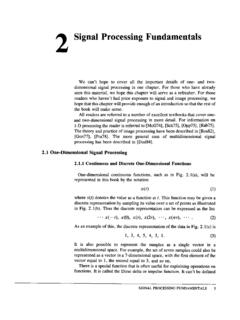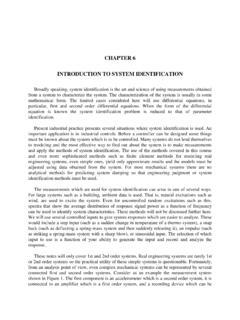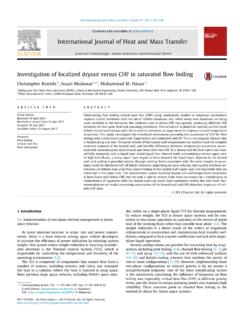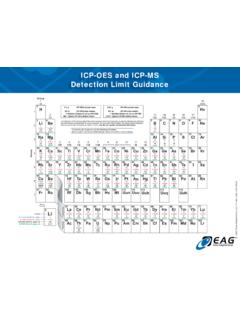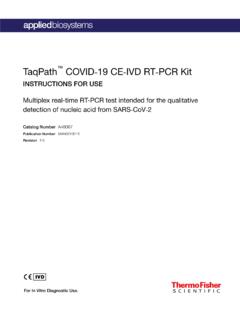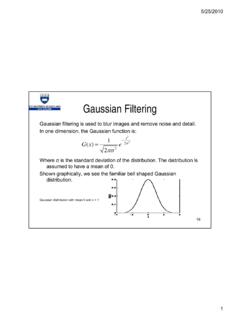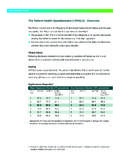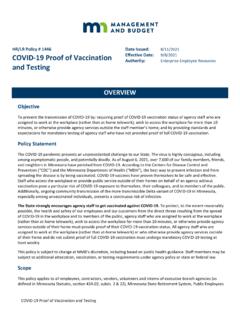Transcription of Lecture 23: Port and Vulnerability Scanning, Packet Sniffing ...
1 Lecture 23: Port and Vulnerability scanning , Packet Sniffing, Intrusion Detection, and Penetration Testing Lecture Notes on Computer and Network Security . by Avi Kak April 22, 2021. 3:39pm 2021 Avinash Kak, purdue University Goals: Port scanners The nmap port scanner Vulnerability scanners The Nessus Vulnerability scanner Packet sniffers Intrusion detection The Metasploit Framework The Netcat utility CONTENTS. Section Title Page Port scanning 3. Port scanning with Calls to connect() 5. Port scanning with TCP SYN Packets 7. The nmap Port Scanner 9. Vulnerability scanning 15. The Nessus Vulnerability Scanner 16. Installing Nessus 19. About the nessus Client 24. Packet Sniffing 25. Packet Sniffing with tcpdump 32. Packet Sniffing with wireshark 35. Intrusion Detection with snort 38.
2 Penetration Testing and Developing New 48. Exploits with the Metasploit Framework The Extremely Versatile Netcat Utility 53. Homework Problems 61. Computer and Network Security by Avi Kak Lecture 23. Back to TOC. PORT scanning . See Section of Lecture 21 for the mapping between the ports and many of the standard and non-standard services. As mentioned there, each service provided by a computer monitors a specific port for incoming connection requests. There are 65,535 different possible ports on a machine. The main goal of port scanning is to find out which ports are open, which are closed, and which are filtered. Looking at your machine from the outside, a given port on your machine is open only if you are running a server program on the machine and the port is assigned to the server.
3 If you are not running any server programs, then, from the outside, no ports on your machine are open. This could be the case with a brand new digital device that is not meant to provide any services to the rest of the world. But, even with a device that was clean originally, should you happen to click accidentally on an email attachment consisting of malware, you could inadvertently end up installing a small server program in your machine that the bad guys could use to do their bad deeds. 3. Computer and Network Security by Avi Kak Lecture 23. When we say a port is filtered, what we mean is that the packets passing through that port are subject to the filtering rules of a firewall. If a port on a remote host is open for incoming connection requests and you send it a SYN Packet , the remote host will respond back with a SYN+ACK Packet (see Lecture 16 for a discussion of this).
4 If a port on a remote host is closed and your computer sends it a SYN Packet , the remote host will respond back with a RST. Packet (see Lecture 16 for a discussion of this). Let's say a port on a remote host is filtered with something like an iptables based Packet filter (see Lecture 18) and your scanner sends it a SYN Packet or an ICMP ping Packet , you may not get back anything at all. A frequent goal of port scanning is to find out if a remote host is providing a service that is vulnerable to buffer overflow attack (see Lecture 21 for this attack). Port scanning may involve all of the 65,535 ports or only the ports that are well-known to provide services vulnerable to different security-related exploits. 4. Computer and Network Security by Avi Kak Lecture 23. Back to TOC. Port scanning with Calls to connect().
5 The simplest type of a scan is made with a call to connect(). The manpage for this system call on Unix/Linux systems has the following prototype for this function: #include < >. int connect(int socketfd, const struct sockaddr *address, socklen_t address_len);. where the parameter socketfd is the file descriptor associated with the internet socket constructed by the client (with a call to three-argument socket()), the pointer parameter address that points to a sockaddr structure that contains the IP. address of the remote server, and the parameter address_len that specifies the length of the structure pointed to by the second argument. A call to connect() if successful completes a three-way handshake (that was described in Lecture 16) for a TCP. connection with a server. The header file includes a number of definitions of the structs needed for socket programming in C.
6 5. Computer and Network Security by Avi Kak Lecture 23. When connect() is successful, it returns the integer 0, otherwise it returns -1. In a typical use of connect() for port scanning , if the connection succeeds, the port scanner immediately closes the connection (having ascertained that the port is open). 6. Computer and Network Security by Avi Kak Lecture 23. Back to TOC. Port scanning with TCP SYN Packets scanning remote hosts with SYN packets is probably the most popular form of port scanning . As discussed at length in Lecture 16 when we talked about SYN. flooding for DoS attacks, if your machine wants to open a TCP. connection with another machine, your machine sends the remote machine a SYN Packet . If the remote machine wants to respond positively to the connection request, it responds back with a SYN+ACK Packet , that must then be acknowledged by your machine with an ACK Packet .
7 In a port scan based on SYN packets, the scanner machine sends out SYN packets to the different ports of a remote machine. When the scanner machine receives a SYN+ACK Packet in return for a given port, the scanner can be sure that the port on the remote machine is open. It is the duty of a good port-scanner to immediately send back to the target machine an RST Packet in response to a received SYN+ACK Packet so that the half-open TCP circuit at the target is closed immediately. 7. Computer and Network Security by Avi Kak Lecture 23. Ordinarily, when a target machines receives a SYN Packet for a closed port, it sends back an RST Packet back to the sender. Note that when a target machine is protected by a Packet -level firewall, it is the firewall rules that decide what the machine's response will be to a received SYN Packet .
8 8. Computer and Network Security by Avi Kak Lecture 23. Back to TOC. The nmap Port Scanner nmap stands for network map . This open-source scanner, developed by Fyodor (see ), is one of the most popular port scanners for Unix/Linux machines. There is good documentation on the scanner under the Reference Guide button at nmap is actually more than just a port scanner. In addition to listing the open ports on a network, it also tries to construct an inventory of all the services running in a network. It also tries to detect as to which operating system is running on each machine, etc. In addition to carrying out a TCP SYN scan, nmap can also carry out TCP connect() scans, UDP scans, ICMP scans, etc. [Regarding UDP scans, note that SYN is a TCP concept, so there is no such thing as a UDP SYN scan.]
9 In a UDP scan, if a UDP Packet is sent to a port that is not open, the remote machine will respond with an ICMP port-unreachable message. So the absence of a returned message can be construed as a sign of an open UDP port. However, as you should know from Lecture 18, a Packet filtering firewall at a remote machine may prevent the machine from responding with an ICMP error message even when a port is closed.]. 9. Computer and Network Security by Avi Kak Lecture 23. As listed in its manpage, nmap comes with a large number of options for carrying out different kinds of security scans of a network. In order to give the reader a taste of the possibilities incorporated in these options, here is a partial description of the entries for a few of the options: -sP : This option, also known as the ping scanning option, is for ascertaining as to which machines are up in a network.
10 Under this option, nmap sends out ICMP echo request packets to every IP address in a network. Hosts that respond are up. But this does not always work since many sites now block echo request packets. To get around this, nmap can also send a TCP ACK Packet to (by default) port 80. If the remote machine responds with a RST back, then that machine is up. Another possibility is to send the remote machine a SYN Packet and wait for an RST or a SYN/ACK. For root users, nmap uses both the ICMP and ACK techniques in parallel. For non-root users, only the TCP. connect() method is used. -sV : This is also referred to as Version Detection . After nmap figures out which TCP and/or UDP ports are open, it next tries to figure out what service is actually running at each of those ports . A file called nmap-services-probes is used to determine the best probes for detecting various services.
